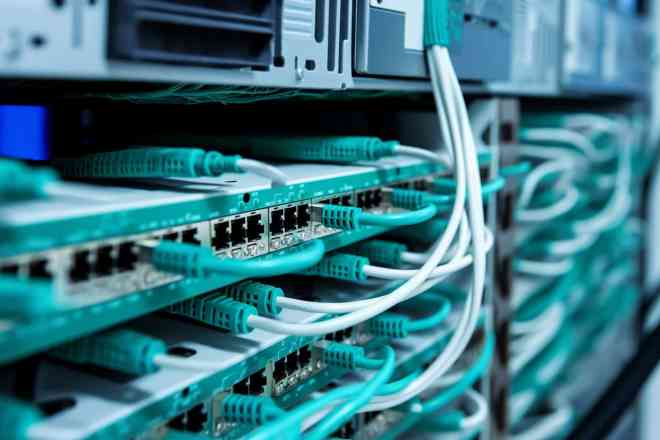Shared hosting is when different accounts share space on a server common to them all. The resources and space on the server are limited, so hosting companies typically limit how much bandwidth and heavy resources a customer can access at a given time.
Is shared hosting good? No type of hosting is intrinsically bad or good. Which type of hosting you choose depends on the size of your business, how many visitors you have daily and the types of content you wish to share.
Web hosting is a $90.42 billion industry with an annual revenue growth of 14.1% for all types of hosting. As more companies move into the technology of today, expect to see the share of cloud-based hosting increase, although some shared hosting packages are already considered cloud computing.
Startups and smaller companies need the flexibility of third-party hosting but the cost effectiveness of sharing resources on the same machine with other business owners. Here are some things to keep in mind when you choose your hosting provider and as you move forward in decisions about whether to stick with shared hosting or try something different, such as a virtual private server (VPS) or dedicated hosting.
1. Consider Costs
Shared hosting is often the cheapest option because you’re sharing resources on a single server with other business owners. The monthly hosting fees can be much lower than for other types of hosting.
However, you should also think about more than just what your monthly hosting fees are. Some hosting companies don’t limit people’s usage on the shared server. This means that a person or two can eat up much of the resources and cause your site to slow down or crash. How much money might you lose if this happens?
Not all shared hosting plans are equal. Read through the fine print carefully before choosing a provider to avoid a situation where your site bogs down due to the actions of others outside your control.
2. Pay for Speed
Look for a shared hosting plan with turbo boosts or some type of speed enhancement. Around two-thirds of users access the internet via mobile devices. One thing many people complain about is the lagging speeds they experience when accessing a site from their smartphones.
Now that 5G is in most populated locations, people expect sites to load faster than ever before. Their phone has the capability but some servers seem to have a hard time keeping up. Conduct regular speed audits to ensure your site loads within seconds rather than a minute or more.
The last thing you want is a beautiful site that has perfect calls to action (CTAs) only to lose people because they have to wait too long for the page to load.
3. Think About Your Knowledge Level
What type of hosting you choose might also depend on your knowledge level. While you can pay for management for any type of hosting, you’ll pay a premium for things such as software updates and troubleshooting. It’s much better to work within a system you’re familiar with than to be at a complete loss when you need to troubleshoot.
Most shared hosting plans run on cPanel, which is highly intuitive for beginner webmasters. You can always begin with shared hosting and then add to your skillset before moving into a VPS or dedicated plan.
4. Talk About Scaling Up
Talk to whatever hosting provider you choose about how you can scale up as your business grows. Most companies make it very easy to move from a shared plan to a VPS to a dedicated situation.
Look for a host providing all of these services so you don’t have to migrate your site to a new server. Even for a dedicated package, your current host will typically move your current site over rather than you having to spend hours moving and checking everything. We highly recommend you still check that all files moved properly and nothing is broken.
If you’re using a content management system (CMS) such as WordPress, you can download a plugin to test for broken links and images, saving you huge chunks of time.
5. Look at the Perks
There are more than 300,000 web hosting companies at any given time. Choosing the perfect one for your business is challenging. One way to narrow down your options is to look at what extras you get with even the most basic package. The benefits should increase as you slide up the scale to bigger storage and bandwidth.
For example, you might need an SSL certificate for an e-commerce store to keep everything secure and customer data encrypted. A provider who offers a free SSL certificate can save you money and might charge the same as one who does not.
Other perks might include better customer service, free marketing coupons or software others don’t install for you.
6. Research Uptime
Why does nearly every shared hosting company advertise 99.9% uptime? Is the number accurate? It’s hard to say for certain. Different providers use different criteria to determine their uptime.
One thing you can do is to look at people already hosted on their site. Punch their address in an uptime monitoring system and watch it for a week or two before choosing a provider. You can see in real-time how often their site goes down or has issues.
While some problems aren’t caused by the hosting company but by whoever is coding the site, you might spot some patterns where several sites on a server go down at once, showing it is a problem on the provider’s end.
You should also search for reviews of whatever company you’re looking at. You want feedback that isn’t listed on their site, because they’re going to choose only positive comments given a chance. Instead, seek out BBB complaints, look at Google reviews and pay attention to blog posts and complaints on social media.
Nearly every server has issues from time to time. The key is to find one with the fewest issues possible.
What Is Shared Hosting for the Average Business Owner?
Is shared hosting right for your brand? Only you can decide how much you’re willing to pay for hosting and if shared is speedy enough and secure enough for your needs. Many businesses start with a shared plan and transition up as their company grows.
You can’t reach customers with your digital presence until you have one. Your best bet is to compare prices and amenities and get your website up sooner rather than later.


